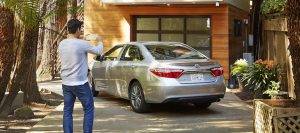
Surface measurement is a branch of metrology which generally refers to measuring the topography of precision surfaces, which also includes features (small scale) which are observed on top of surfaces. This simply includes the roughness of surfaces, fractality of surfaces and above all the primary form of surfaces.
It’s worth noting that the earliest pioneers understood the art of surface measurement but they may have lacked the knowledge to understand the roles microscopic structures and role measurement generally played in surface measurement. You can find out more about surface measurement equipment online. Keep reading to learn how the industry has changed.
Methods of comparing roughness
In the earlier generation surface measurement equipment was machined to ascertain the degree of roughness and were also used as reference surfaces. The pioneers at this period of time simply used their thumbnails to scratch the surfaces in question and used their sense of touch to compare them with their reference materials.
This method only worked for the experienced operators. But it proved to be hectic and mathematically unreasonable as there was no existence of data collection and means of quantifying their surfaces. That’s why this method proved to be very subjective to the earlier operators.
The change in preference from smooth to rough surfaces
After a long span of time in which the earliest machinists believed in the notion that smoother surfaces were better than rough surfaces, the view dramatically was changed following a sequence of events with the height of this events coming in the year 1930 when the Bentley Engines company which was at this time rated to be the best manufacturer in smooth cylindrical walls taking over in the management of the Le Mans 24-Hour race. This was followed by a series of events which were necessary for the betterment of surface texture, keeping in mind that at this period of time optical microscopes were used for magnification of surfaces (they were subjective).
Measure of texture and level
People started to use a trace stylus together with a mechanical amplifier which was linked in order to replicate the trace of grass on a glass smoked surface, this kind of method also proved to be subjective and non-workable at times.
Three years later E.J.Abbot invented an instrument that was referred to as the first analog surface instrument. It typically worked by using a stylus to contact the parts to be measured and for the first time this instrument provided an almost accurate quantity of texture.
He also later invented an Abbot-fire stone curve which typically worked by placing a simple curve on the surface to be measured and this curve only made contact on areas of question hence allowing the materials to calculate an air ratio as a function.
Analyzing data
The rising desire to trace a correct surface texture led to the realisation that the stylus tip and the devices that was used with it had a number of limitations. But if it could be merged with a large number of amalgams with different frequencies on the path being traced, it could be possible for the machines to analyze data which was raised from the oretical work.
This discovery led to the development of large numbers of commercial instruments which were popular for their basic rough parameters they included Rz, Ra and also above all the 2RC filters.
This kind of revolution enabled the earlier pioneers to create a number of instruments that could digitise the analog signal from the stylus hence generation of a typical surface profile trace.
With this kind of inventions, we could then apply mathematical tools to analyze and verify profile characteristics. It’s no wonder there are different kinds of materials with national and international quality standards which can be used to analyze different kinds of surface textures. They include the two-dimensional (2-D) profile which has lately been modified into a three dimensional.
Moreover, the modern digitalized instruments can gather a diverse spectrum of data from given kinds of traces and make analysis when possible as compared to the analog instrument which could only gather specific measurement data.
Importance of surface measurement
- It’s important in determining the stability of a particular object.
- it’s used to define surface roughness
iii. it’s used to measure surface roughness
- it’s essential in controlling the surface finish



